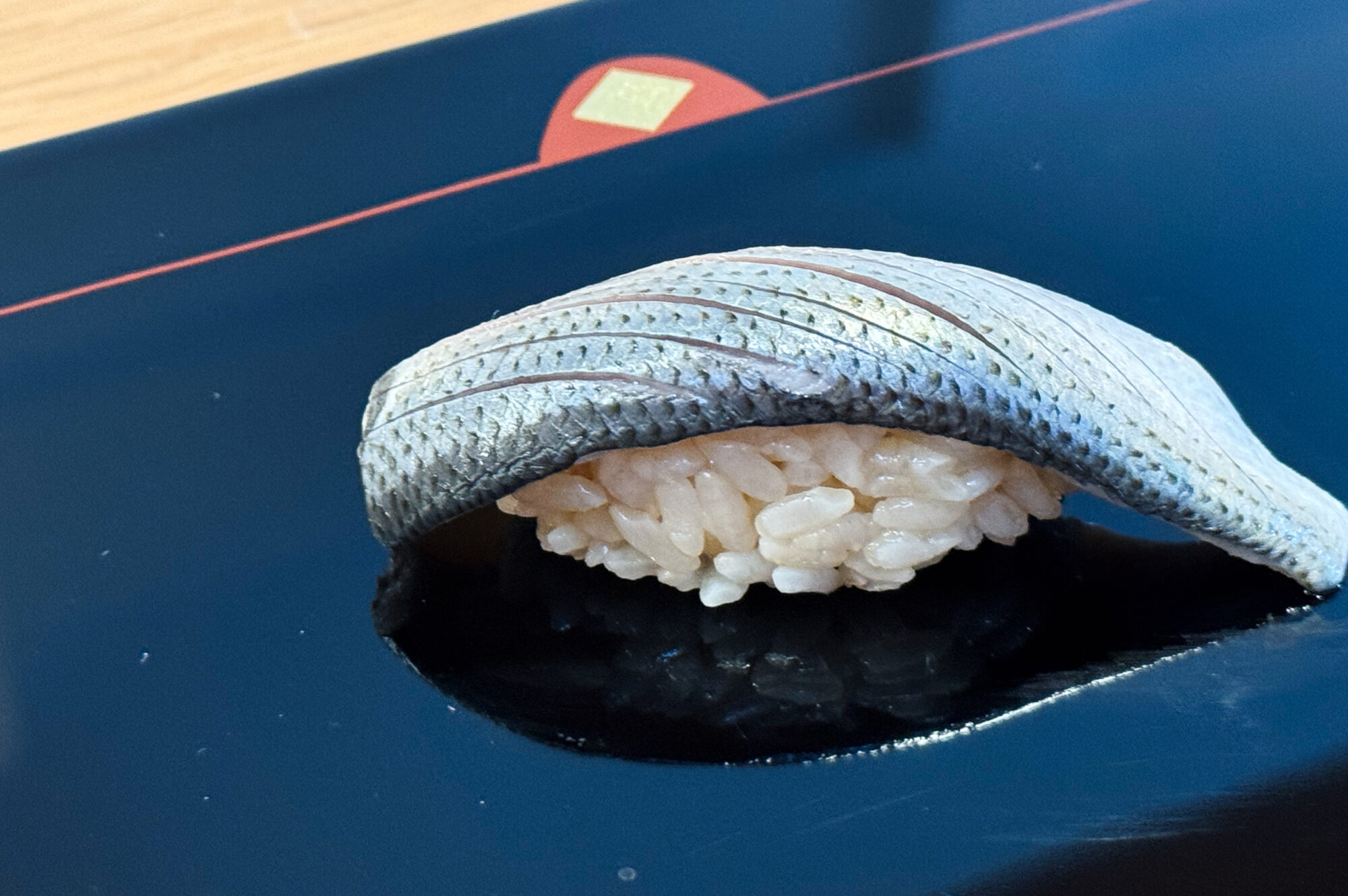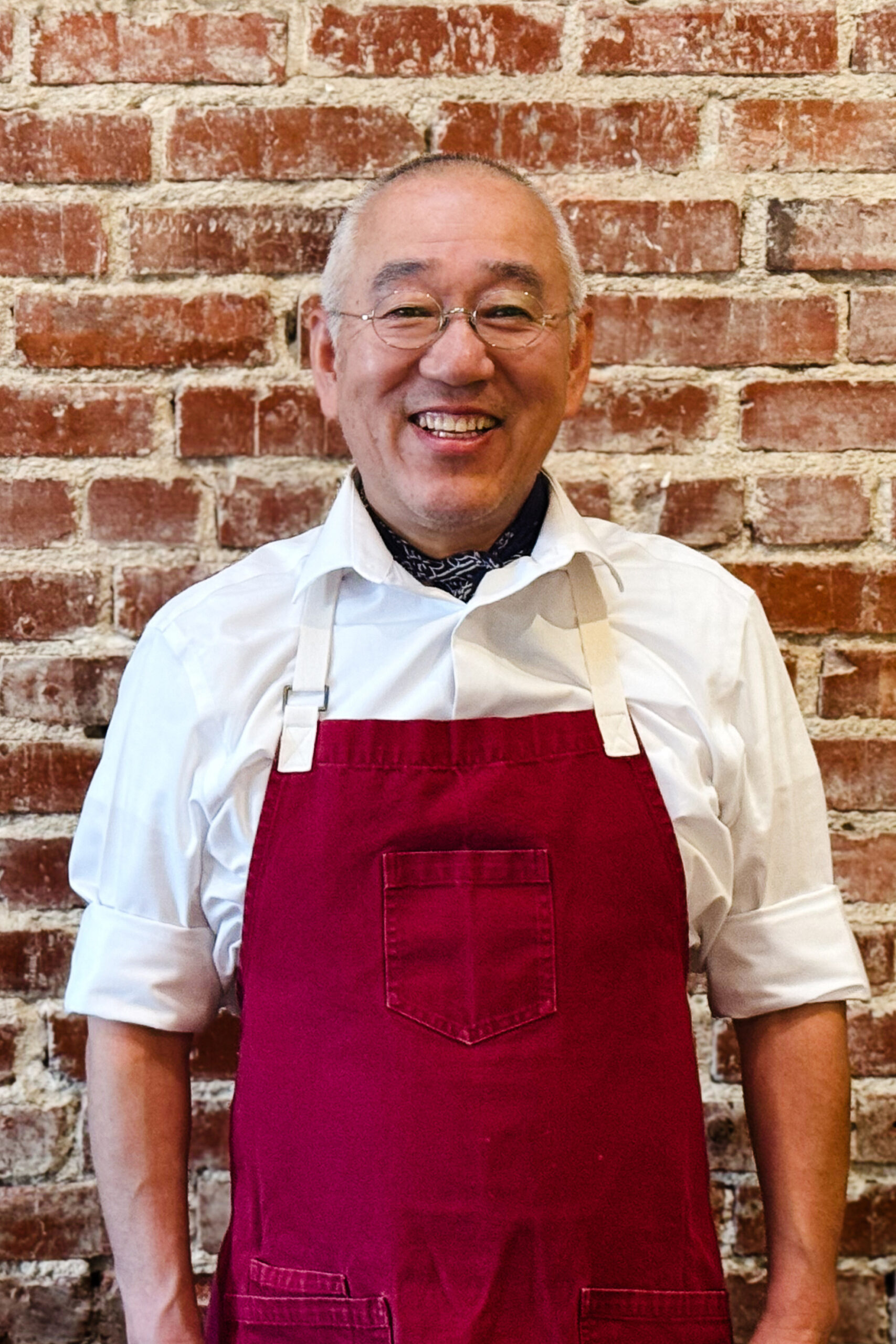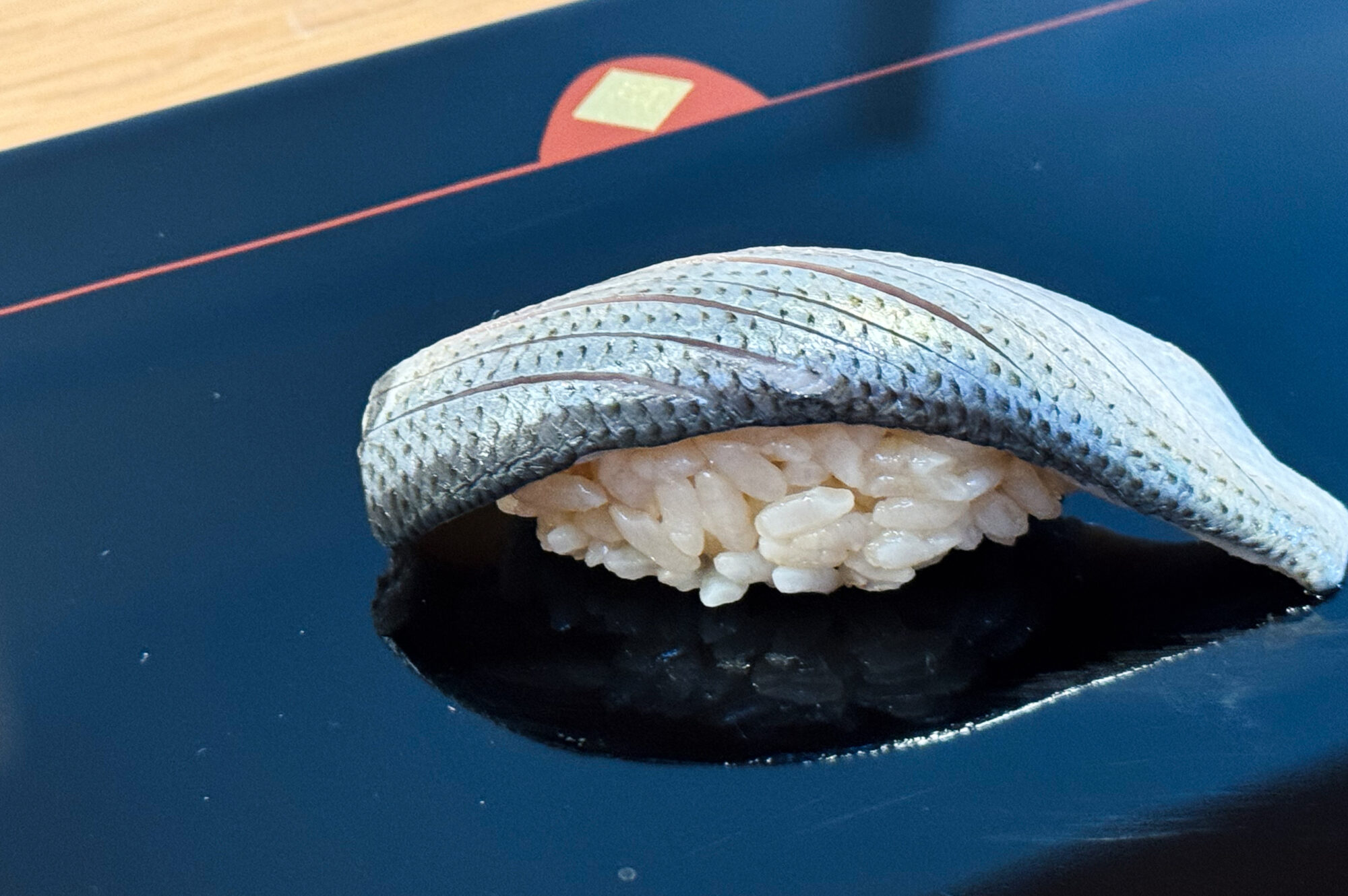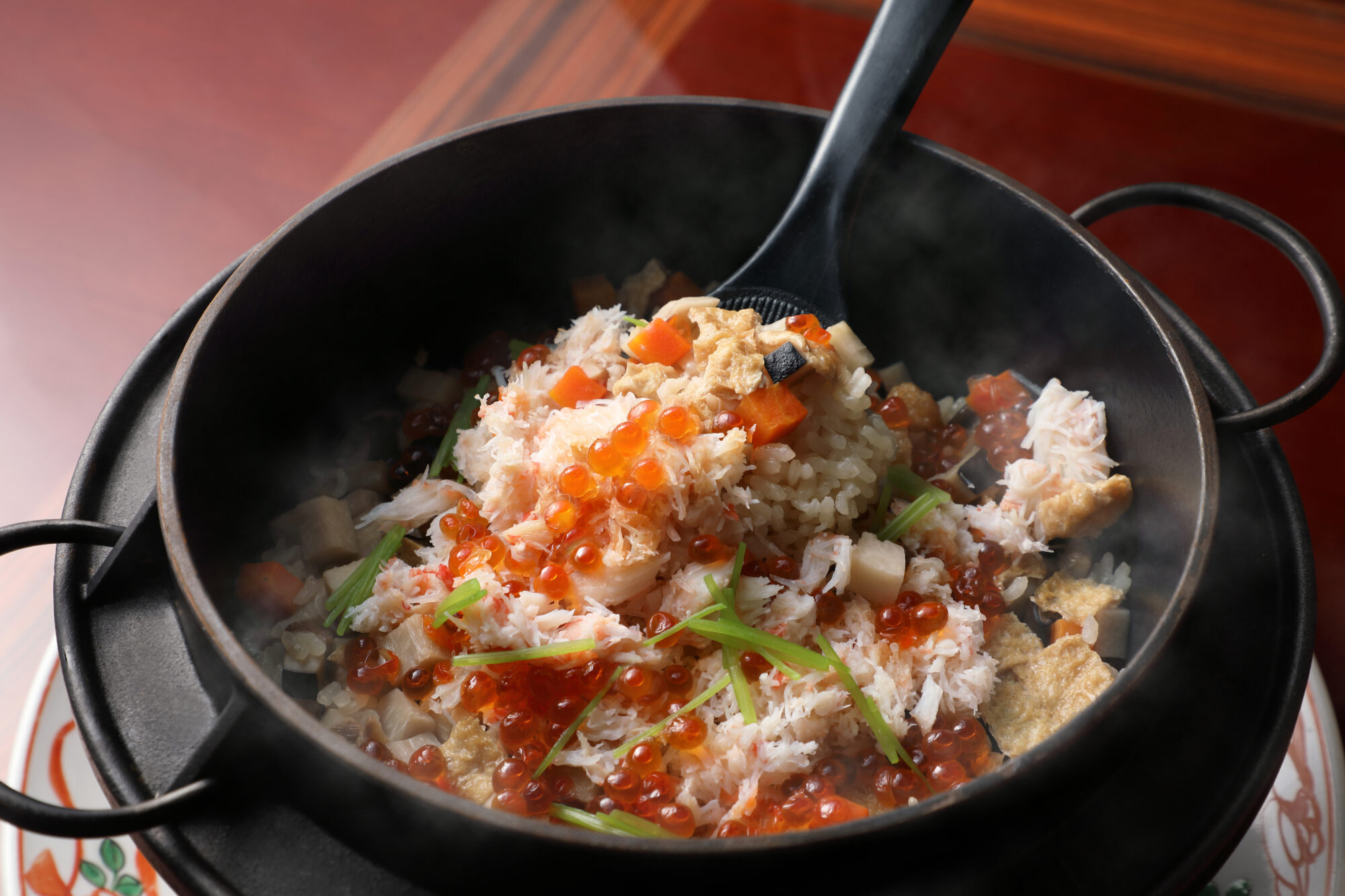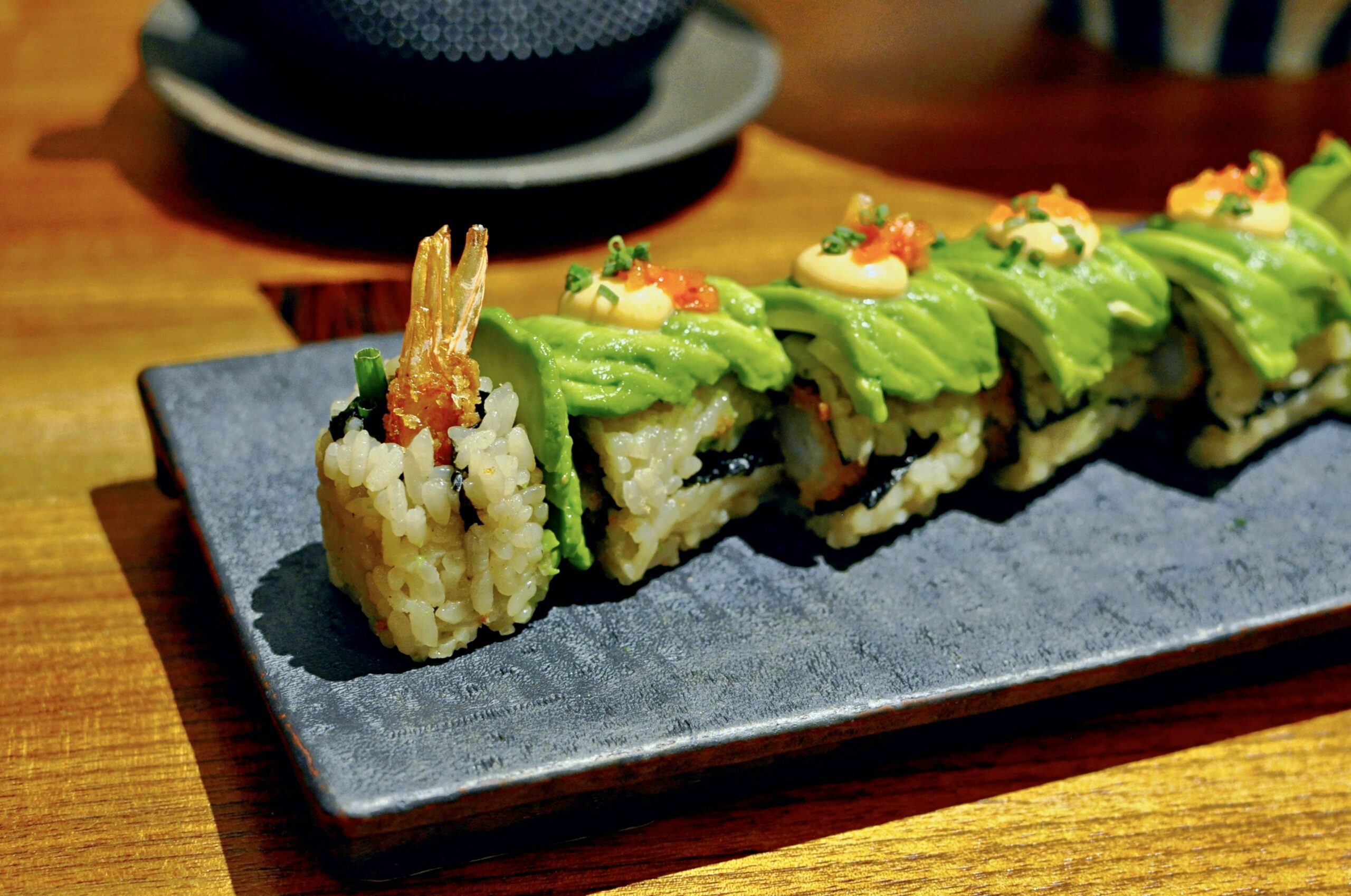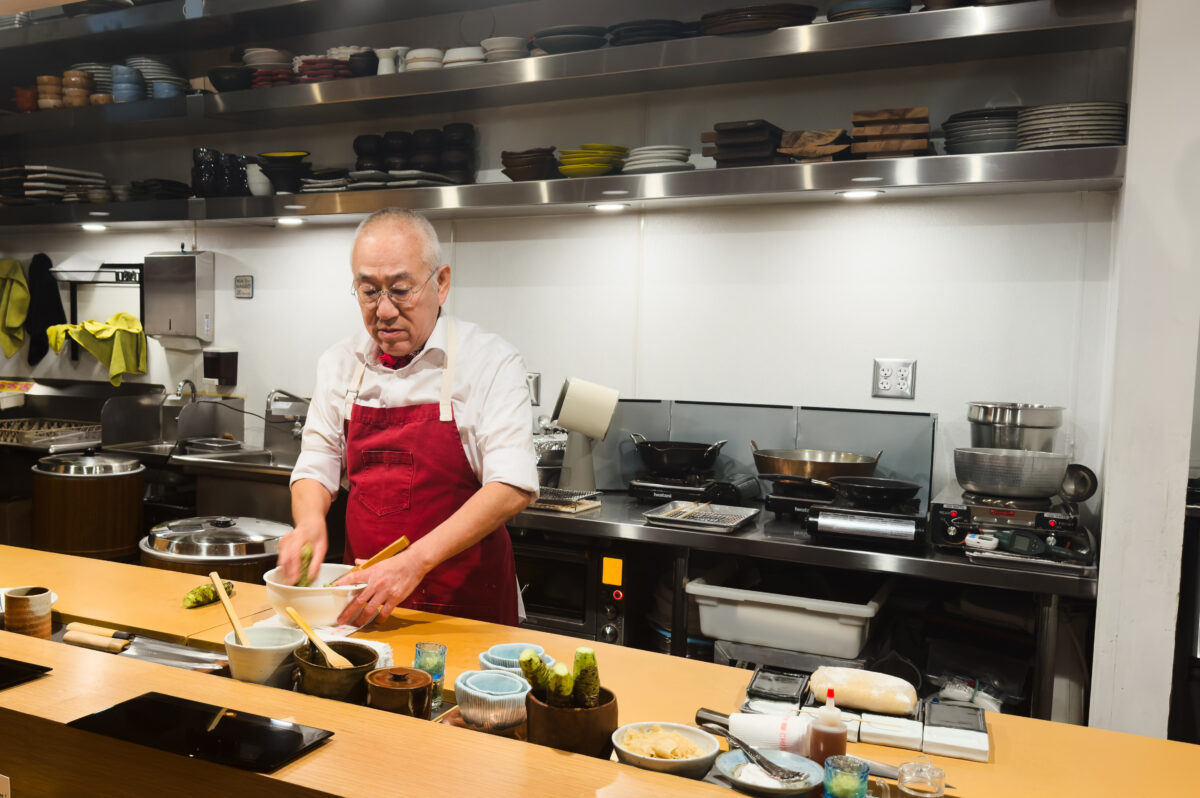
Los Angeles: Where Diverse Cuisines and Health Consciousness Come Together
Health-conscious lifestyles are popular among Angelenos, and the city abounds with restaurants and stores specializing in organic and vegan food. Hispanics make up about half the population, and Caucasians are in the minority. The kinds of rice preferred by each ethnic group vary, so supermarkets carry a diverse array of rice varieties. The most common type is long grain rice. While the rice produced in Japan is not sold in general supermarkets, the Japanese medium grain varietal produced in California, which is known as “sushi rice”, is readily available. Meanwhile, high-end sushi restaurants tend to prefer short-grain rice produced in Japan.
Japanese specialty markets sell rice produced in Japan, as well as sushi and onigiri made using this rice.
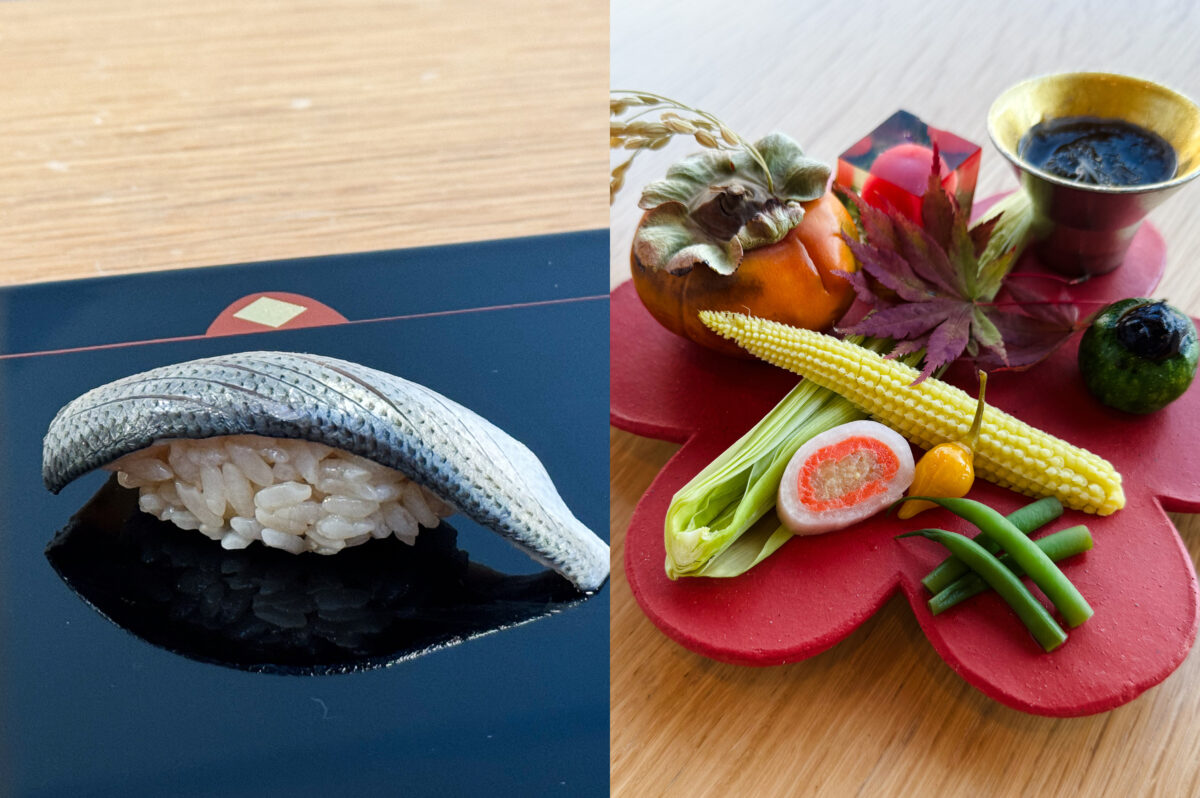
Could you tell us about Morihiro, your restaurant?
In 2000, I opened a sushi restaurant called Mori Sushi in LA. After working there for nearly 10 years, I felt like I needed a new challenge. In 2011 I quit and decided to focus on growing rice, which I had already been doing alongside running the restaurant business. After traveling around the world with Mr. Ichiro Tamaki of Tamaki Rice (*1), I ended up in Uruguay, a country that whose climate is well-suited to rice cultivation. After establishing a rice cultivation system over there, I opened the Morihiro restaurant in 2020 in LA.
At Morihiro, we offer two sushi courses: “Omakase at Table” and “Omakase at Sushi Bar.” We are particular about the seasonality of our ingredients and value freshness greatly. Our customers are mainly locals. We asked a carpenter we know to design the interior from scratch, and commissioned him to make the counter and other fixtures. Originality is part of everything we do, from our design to our food.
*1 Ichiro Tamaki: After working in Japan in the rice farming industry, Tamaki moved to the United States and became involved in the rice milling business. He sells his own brand of rice, “Tamaki Rice,” across the world. Tamaki Rice has established itself in the North American market as delicious rice.
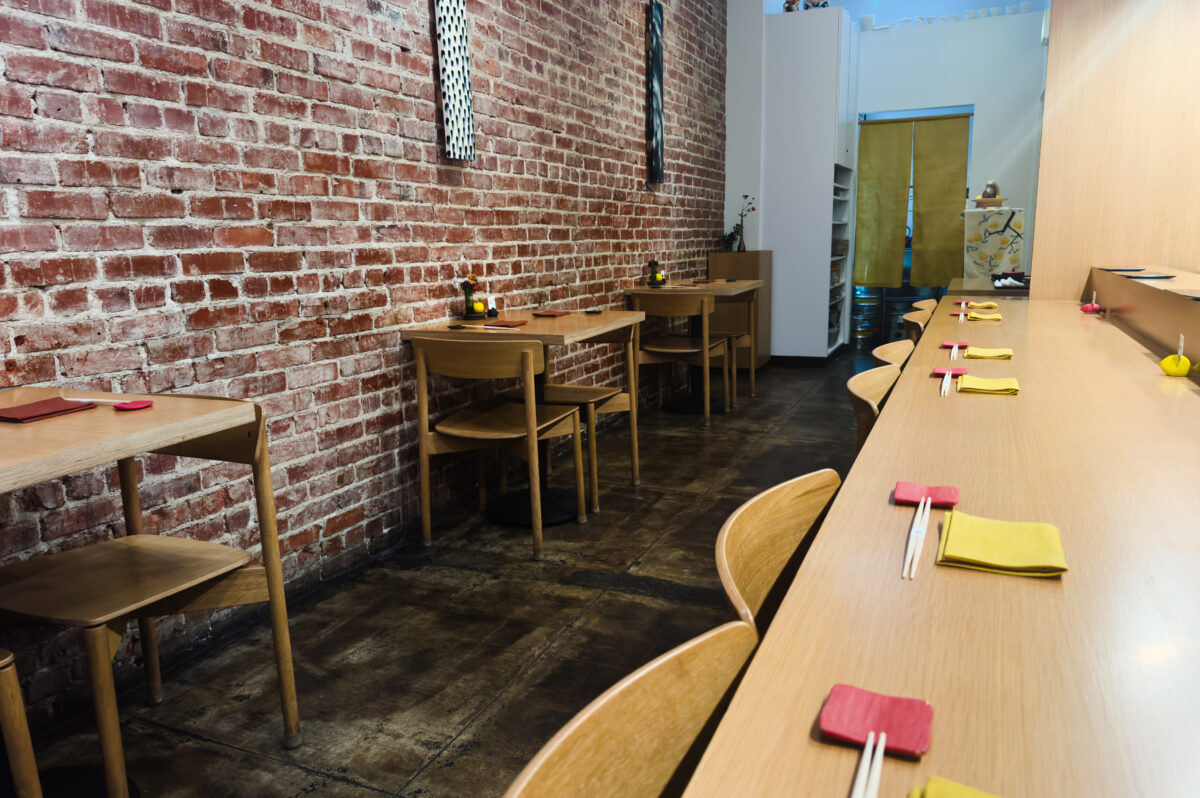
For the best texture, aim for a breakage rate below 10%
How do you define “delicious rice”?
In my opinion, delicious rice is rice that, in the case of sushi, has a smooth texture and allows you to feel each grain of rice in your mouth.
To achieve this, I regularly check how many grains of rice out of 100 grains are broken. If there are any broken grains, the starch will come out when you put it in your mouth, so the texture will disappoint. My ideal is a breakage rate of 10% or less. If there are 10 or fewer breaks in 100 grains, I consider that to be good, but as you can see, the rice I handle here has no breakage. I also measure the moisture content of the rice. I think that a moisture level of 14% or more is good. I don’t use anything any drier than that.
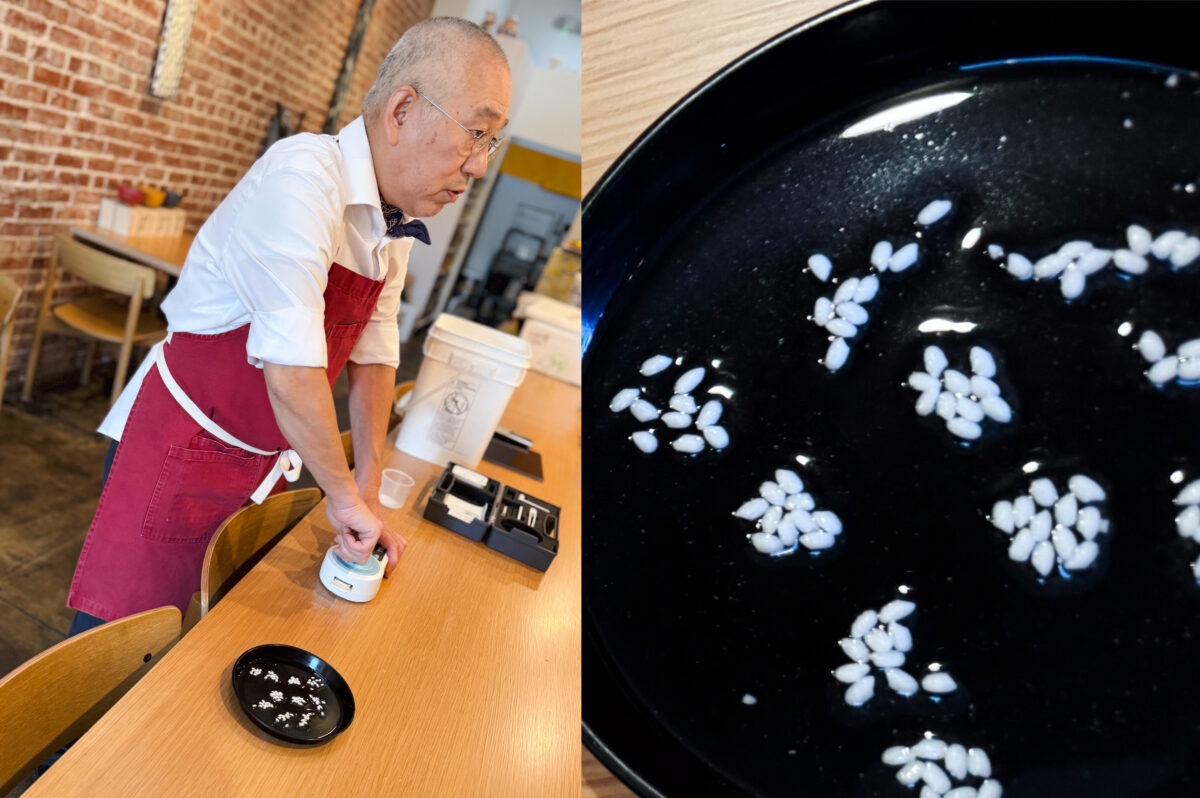
Please tell us about the varieties you use in your restaurant.
We buy two types: Akitakomachi, which has been grown by farmers for a long time, and Rikuu No. 132. The latter is a variety that is resistant to cold damage, and it came as a recommendation from Kenji Miyazawa who is from Iwate Prefecture in northern Japan. The abbot of a temple in Iwate heard about Kenji’s work, and recently, as part of a Satoyama Initiative project, began cultivating Rikuu No. 132 with local children. Since then, the number of farmers growing this variety has been increasing. In total, we purchase 5 tons of rice every year, but since Rikuu No. 132 is a rare variety that yields only about 200 kg, we save this type for special occasions.
I Know Because I Produced it—— “Japanese Rice is in a League of its Own”
What led you to choosing Japanese rice for your restaurant?
I am from Iwate prefecture, and I’m well familiar with the struggles facing rice farmers, an increasingly aging and dwindling group of workers. Many are also running at a loss because they are selling their rice at such low prices.
I’m proud of the Japanese Koshihikari rice we’ve been able to produce in Sacramento and now Uruguay, and we’ve been able to refine it to a standard that I’m satisfied with and can sell.
However, the quality of Japanese rice is in a league of its own. I wanted to do something to support my hometown, so I asked rice farmers in the area to grow rice specially for me, as I would purchase it at a premium.
How do you keep the rice?
We import 5 tons of rice from Japan every October, and store it in a vendor’s refrigerator. Then, every week, we have the vendor bring the amount we will use to the restaurant, and we mill it on-site every day.
Why do you mill it every day?
No matter how good the rice is, it can only be kept fresh for up to three days after it has been milled. We want to use it all up within three days. Otherwise, it won’t taste as good. Whether you eat it in sushi or as plain white rice, the texture of the rice is completely different when’s freshly milled. It took us decades of trial and error before we realized this. When we started growing rice in Mr. Tamaki’s rice paddies and bringing the brown rice to the restaurant to mill it every day, we finally achieved a consistent flavor.
We also researched how to improve the texture. Polishing the brown rice twice is one method we use. We pass the rice through the rice polisher twice, and since the rice cracks more if we just polish the surface, we polish it a little at a time. This greatly improves the texture. In Japan, the rice shop would do all of this for you, but since there is no such system in LA, we have to do it ourselves. We brought a rice polishing machine from Yamagata to our restaurant.
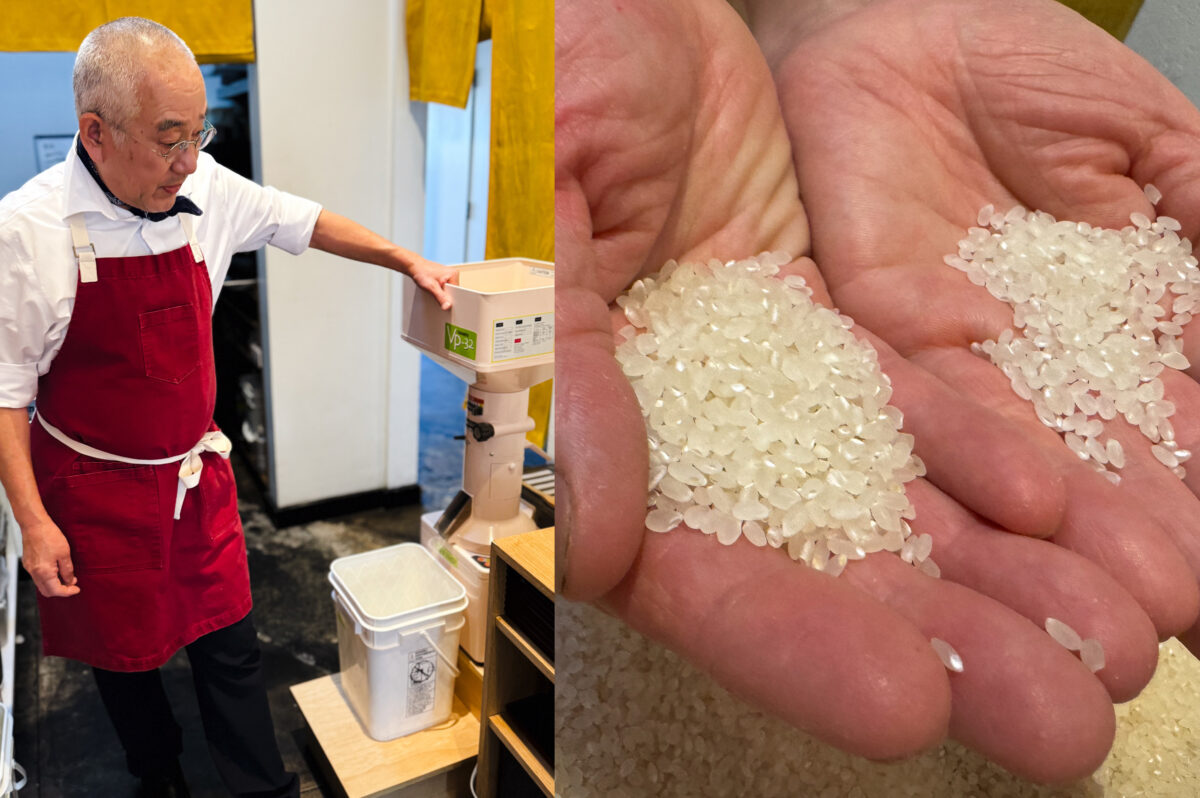
<Photo Right>The rice on the left has been polished once, and the rice on the right has been polished twice. The latter rice is slightly whiter.
Do you have any preferences when it comes to water?
The water in the Los Angeles area is hard water, so I filter it to make it softer for cooking. I’m more particular about the way I wash the rice than the water I use. It’s better to wash the rice thoroughly. It removes the dirt and makes the rice smooth and pleasant to the palate.
Looking Towards the Future
I want to keep making sushi until the very end.
Out of all the sushi I have tried in my life, the one that I wanted to emulate the most was sushi made by Mr. Jiro Ono of Sukiyabashi Jiro in Ginza. When I first went to eat there, Jiro-san was in his late 60s. He said, “every day I think about how to make my sushi more delicious.” At the time, I thought he was joking, but I turned 60 this year and realized that I’ve been thinking the same thing. I like the process of making sushi delicious as possible, as well as the technique of making it, so I’m always doing my research.
I really identify with the words of the artist Kitaoji Rosanjin, “The dish is the kimono (clothing) of the food.” The dish enhances the taste, aroma and presentation of the food. I have always had a strong desire to make custom dishes for my food, and as such I make my own ceramic tableware. There is a plate that is appropriate for each dish, and the true deliciousness is brought out for the first time when all the elements such as the ingredients, rice, season and dish are in harmony. I’m always assessing each element of a dish to figure out how they can be best combined to further enhance the deliciousness of meal.
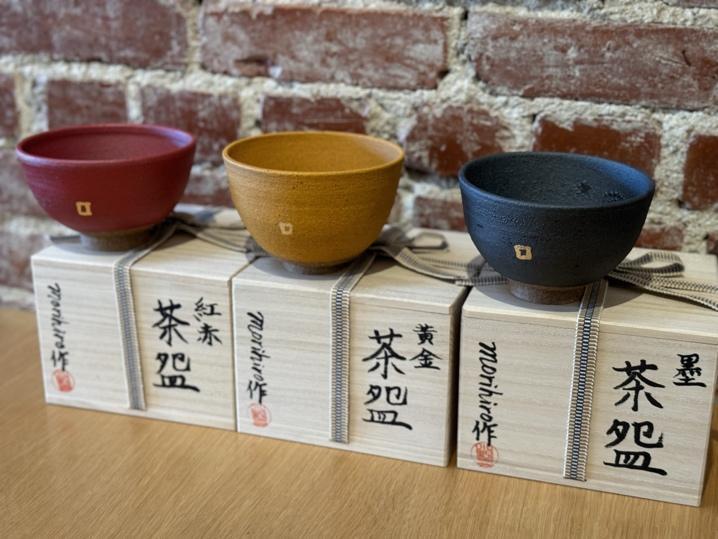
Los Angeles’s food culture is supported by its ethnic diversity. Rice is a familiar food for people in Los Angeles, and there is a wide range of rice varieties available to suit different food cultures. Of these, Japanese rice is so exceptional that even Chef Onodera considers it to be in a “league of its own.” The taste of Japanese rice is so good that many famous restaurants prefer to use it over other varietals. Although Japanese-produced rice is still overshadowed by the strong sales of California-grown rice, the amount of rice consumed in the US as a whole is increasing year by year. The rich flavor of Japanese rice has great potential to become even more widely recognized and appreciated in the future.
What is the secret to cooking delicious rice?
I think it’s to wash the rice quickly and thoroughly.
First, when you add water to the rice, shake it out and immediately discard the water. The rice will absorb the first round of dirty water, so it’s better to discard it as soon as possible. Then rinse it lightly three times. After that, rinse it lightly twice. Then rinse it lightly three times again, as you did at the beginning. When you’ve done that, the water will be clear. The texture will also be smooth.
I also recommend cooking it in an earthenware pot. In my hometown, my grandmother used to cook rice in a traditional Japanese earthenware pot over an open fire. I thought I would never be able to recreate that taste, but the rice cooked in the earthenware pot was just as delicious as my grandmother’s. For me, cooking rice in an earthenware pot was a new discovery.
What foods go best with Japanese rice?
In the past, I have introduced local customers to salted onigiri and nuka-zuke (pickles made in brine and fermented rice bran). Pickles are popular across the world. I also introduced curry rice at a lecture on food and science at the University of California, Los Angeles. All of these were very well received.
